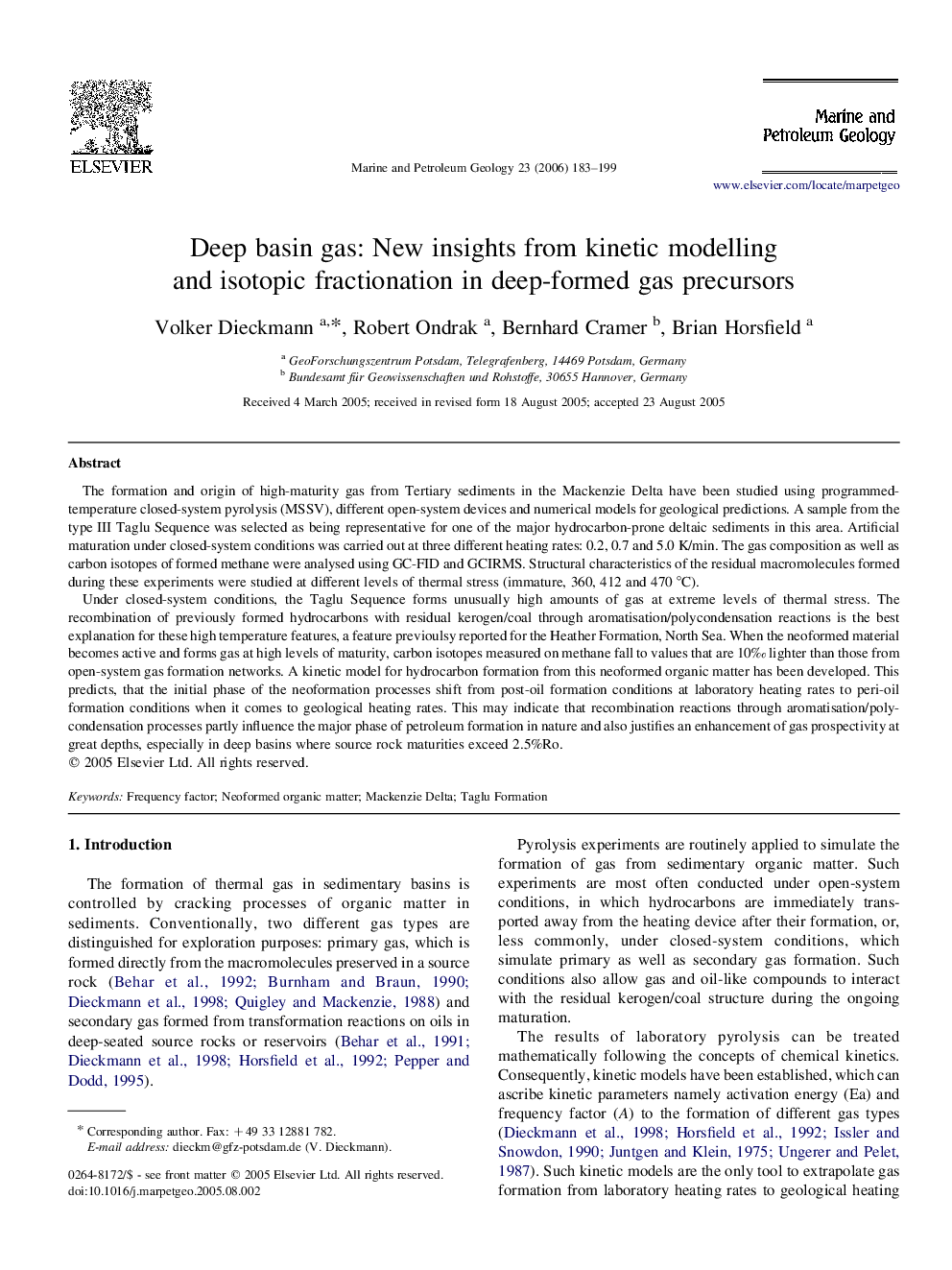| Article ID | Journal | Published Year | Pages | File Type |
|---|---|---|---|---|
| 4696759 | Marine and Petroleum Geology | 2006 | 17 Pages |
The formation and origin of high-maturity gas from Tertiary sediments in the Mackenzie Delta have been studied using programmed-temperature closed-system pyrolysis (MSSV), different open-system devices and numerical models for geological predictions. A sample from the type III Taglu Sequence was selected as being representative for one of the major hydrocarbon-prone deltaic sediments in this area. Artificial maturation under closed-system conditions was carried out at three different heating rates: 0.2, 0.7 and 5.0 K/min. The gas composition as well as carbon isotopes of formed methane were analysed using GC-FID and GCIRMS. Structural characteristics of the residual macromolecules formed during these experiments were studied at different levels of thermal stress (immature, 360, 412 and 470 °C).Under closed-system conditions, the Taglu Sequence forms unusually high amounts of gas at extreme levels of thermal stress. The recombination of previously formed hydrocarbons with residual kerogen/coal through aromatisation/polycondensation reactions is the best explanation for these high temperature features, a feature previoulsy reported for the Heather Formation, North Sea. When the neoformed material becomes active and forms gas at high levels of maturity, carbon isotopes measured on methane fall to values that are 10‰ lighter than those from open-system gas formation networks. A kinetic model for hydrocarbon formation from this neoformed organic matter has been developed. This predicts, that the initial phase of the neoformation processes shift from post-oil formation conditions at laboratory heating rates to peri-oil formation conditions when it comes to geological heating rates. This may indicate that recombination reactions through aromatisation/polycondensation processes partly influence the major phase of petroleum formation in nature and also justifies an enhancement of gas prospectivity at great depths, especially in deep basins where source rock maturities exceed 2.5%Ro.
